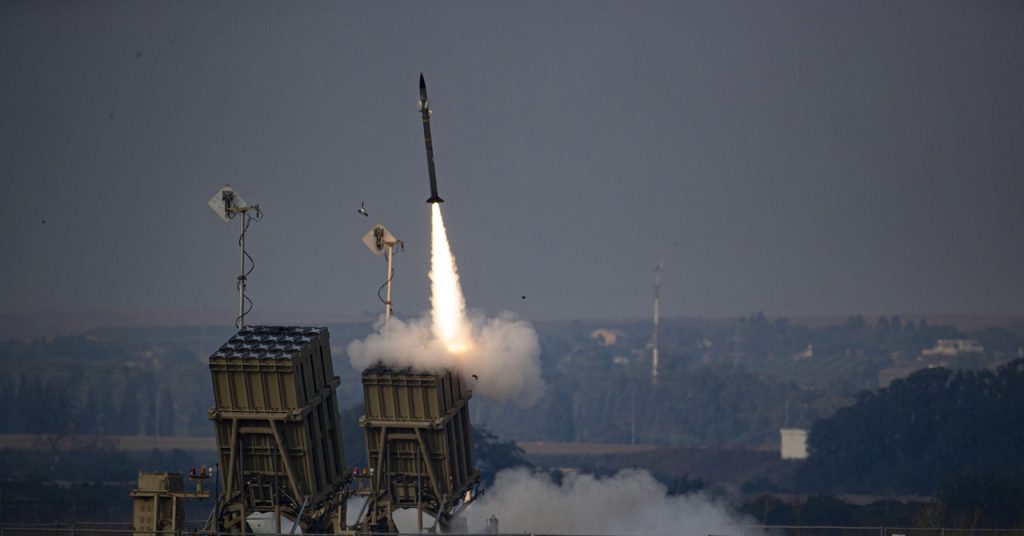Israel’s Iron Dome: A Formidable Defense Against Iran’s Drone and Missile Attacks
The Iron Dome’s Capabilities
Israel’s Iron Dome, a sophisticated missile defense system, has proven to be a crucial asset in countering the recent onslaught of more than 200 drones and cruise missiles launched by Iran. The system, which consists of at least 10 strategically placed missile-defense batteries across the country, utilizes advanced radar technology to detect incoming threats. Once detected, the information is relayed to a command-and-control center, where the threat is assessed, and interceptor missiles are fired at the incoming objects that pose the greatest risk to populated areas.
According to Iain Boyd, director of the Center for National Security Initiatives at the University of Colorado, the Iron Dome’s design, which was originally intended to defend against low-flying, fast-moving missiles, makes it well-suited to address the threat of drones. “A drone is going to be flying probably slower than these rockets,” Boyd explains, “so in some ways it’s an easier threat to address.”
Challenges Faced by the Iron Dome
Despite its advanced capabilities, the Iron Dome may face challenges when dealing with drones flying at extremely low altitudes, as they may evade radar detection. Additionally, the sheer number of incoming threats can potentially overwhelm the system, as demonstrated during a previous conflict in which thousands of missiles were launched at Israel.
Reports indicate that a 10-year-old boy was injured by shrapnel from an interceptor missile, highlighting the potential risks associated with the Iron Dome’s operations.
Iran’s Shahed-136 Drones
The drones being used by Iran in the recent attacks are likely the Shahed-136, a type of suicide drone that has been prominently featured in Russia’s war against Ukraine. These drones, while relatively inexpensive to produce, have a built-in warhead and are designed to crash into their targets.
“At one level they’re not difficult to take down. They’re not stealthy, they don’t fly very fast, and they don’t maneuver,” says David Ochmanek, senior defense analyst at the nonprofit RAND Corporation. “In some way they’re like airborne targets.”
The Shahed-136’s slow speed and fixed flight path require them to travel for several hours before reaching their intended destination, providing ample opportunities for interception.
International Support in Countering the Drone Threat
In addition to Israel’s efforts, the US military has confirmed its involvement in shooting down an unspecified number of Iranian drones and has pledged to continue doing so. The UK has also offered support, providing backup for US planes diverted from their existing missions and assisting in the interception of UAVs.
As the situation unfolds, the Iron Dome, along with international support, will continue to play a vital role in defending Israel against the ongoing drone and missile attacks launched by Iran.

2 Comments
Israel’s playbook on drone defense? Sounds like something straight out of a high-stakes spy thriller!
Israel’s counter-drone tactics? Like a high-tech game of chess with sky-high stakes.